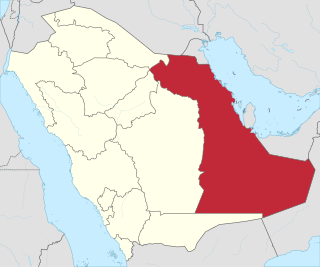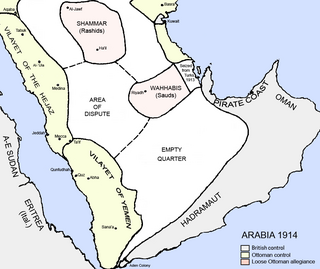Part of a series on the | ||||||||
|---|---|---|---|---|---|---|---|---|
| History of Kuwait | ||||||||
 | ||||||||
| Prehistoric and ancient | ||||||||
| 5th–15th century | ||||||||
| ||||||||
| 15th–18th century | ||||||||
| ||||||||
| 18th century to 1961 | ||||||||
| ||||||||
| Kuwait since 1961 | ||||||||
| ||||||||
| See also | ||||||||
The Kuwait–Najd War erupted in the aftermath of World War I. The war occurred because Ibn Saud of Saudi Arabia wanted to annex Kuwait. [3] [4] The sharpened conflict between Kuwait and Najd led to the death of hundreds of Kuwaitis. The war resulted in sporadic border clashes throughout 1919–1920.

The Aftermath of World War I saw drastic political, cultural, economic, and social change across Eurasia, Africa, and even in areas outside those that were directly involved. Four empires collapsed due to the war, old countries were abolished, new ones were formed, boundaries were redrawn, international organizations were established, and many new and old ideologies took a firm hold in people's minds.
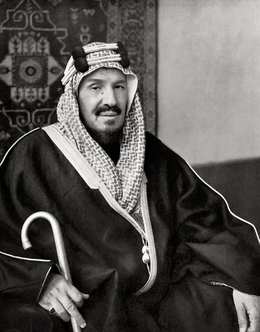
Abdulaziz ibn Abdul Rahman ibn Faisal ibn Turki ibn Abdullah ibn Muhammad Al Saud, usually known within the Arab world as Abdulaziz and in the West as Ibn Saud, was the first monarch and founder of Saudi Arabia, the "third Saudi state".

Kuwait, officially the State of Kuwait, is a country in Western Asia. Situated in the northern edge of Eastern Arabia at the tip of the Persian Gulf, it shares borders with Iraq and Saudi Arabia. As of 2016, Kuwait has a population of 4.5 million people: 1.3 million are Kuwaitis and 3.2 million are expatriates. Expatriates account for 70% of the population.
Contents
Following the Kuwait–Najd War, Ibn Saud imposed a trade blockade against Kuwait for 14 years from 1923 until 1937. [3] [5] The goal of the Saudi economic and military attacks on Kuwait was to annex as much of Kuwait's territory as possible. [3] At the Uqair conference in 1922, the boundaries of Kuwait and Najd were set. [3] Kuwait had no representative at the Uqair conference. [3] Ibn Saud persuaded Sir Percy Cox to give him two-thirds of Kuwait's territory. [3] More than half of Kuwait was lost due to Uqair. [3] After the Uqair conference, Kuwait was still subjected to a Saudi economic blockade and intermittent Saudi raiding. [3]
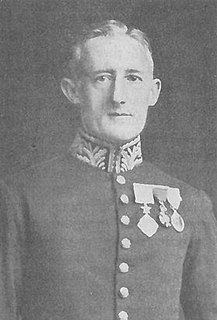
The Uqair Protocol or Uqair Convention was an agreement at Uqair on 2 December 1922 which defined the boundaries between Iraq and the Sultanate of Nejd and between Kuwait and Nejd. It was imposed by Percy Cox, the British High Commissioner to Iraq, in response to Bedouin raiders from Nejd under ibn Saud. Cox met ibn Saud and Major John More, the British Political Agent to Kuwait. The boundaries included a Saudi–Iraqi neutral zone and a Saudi–Kuwaiti neutral zone.

Major-General Sir Percy Zachariah Cox was a British Indian Army officer and Colonial Office administrator in the Middle East. He was one of the major figures in the creation of the current Middle East.
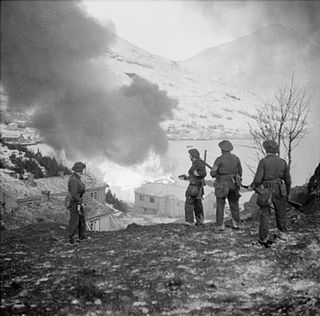
Raiding, also known as depredation, is a military tactic or operational warfare mission which has a specific purpose and is not normally intended to capture and hold a location but instead finish with the raiding force quickly retreating to a previous defended position prior to enemy forces being able to respond in a coordinated manner or formulate a counter-attack. A raiding group may consist of combatants specially trained in this tactic, such as commandos, or as a special mission assigned to any general troops. Raids are often a standard tactic in irregular warfare, employed by warriors, guerrilla fighters or other irregular military forces. Some raids are large, for example the Sullivan Expedition.
